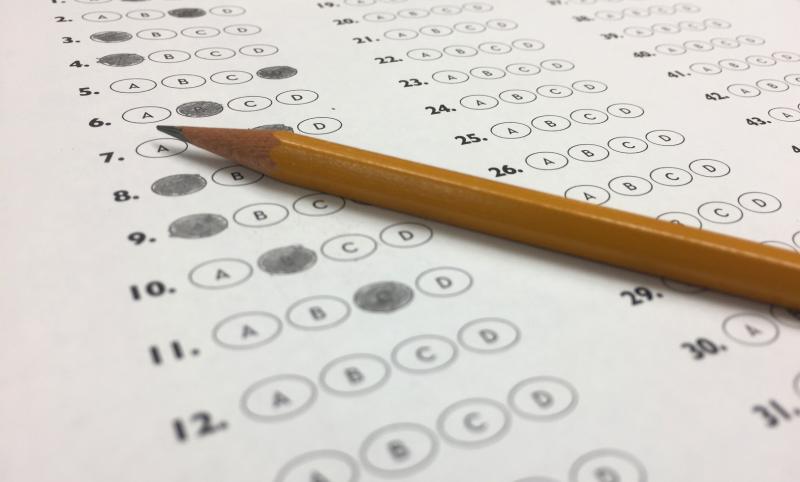Standardized Testing: A Take on the Basics
NAEye explores the effects of standardized testing and the new regulations for the Keystone exams.
Just seeing the scantron can induce fear and anxiety. Should they? Are they as “high stakes” as ever?
Arguments about standardized tests are nothing new. For years, teachers, parents, and kids have all expressed a typically negative view on such tests. It’s well known that those kinds of tests can breed the wrong kind of educational environment, and it’s obvious that they can influence curricula. Not to mention they make a few schools days every year feel like absolute misery. However, there is one thing these debates tend to leave out— standardized tests and the measurements they show are an insult to the learning process.
Simply, even if we ignore the crooked curriculums and competitive climates as consequences, these one-dimensional, fill-in-the-bubble tests undermine everything our educational system stands for.
Standardized tests in schools became mandatory in order to keep track of how schools and teachers were doing. It was part of the No Child Left Behind (NCLB) Act, an update of the original Elementary and Secondary Education Act, in 2001 that aimed to hold schools responsible for the success of all students by monitoring their progress with none other than standardized tests.
This means that current high schoolers have been given standardized tests for as long as they could read. They are tested several times a year, and it’s never questioned. It feels like a given.
The initial goal of enacting testing was to get all students to a “proficient” level, but each state got to decide what exactly qualified as proficient. Still, by 2015, not a single state had gotten 100% of its students to their set level, so the whole endeavor was thrown out the window.
So, one may wonder, if the original goal failed, why are we still doing so many standardized tests? If it didn’t really work, why keep the system in place?
Well, that’s a complicated question, because there are a lot of politics in play. A particular policy changed Pennsylvania’s graduation requirements regarding the Keystone exams.
As any high schooler knows, there are Algebra, Biology, and Literature Keystones completed in 8th, 9th, and 10th grade, respectively. Previously, passing all three exams was a graduation requirement, and there wasn’t much space to get around that rule. But when Governor Wolf signed Act 158 in October of 2018, in an effort to minimize testing, some requirements changed.
Dr. Christopher, North Allegheny’s assistant superintendent, sat down with NAEye to help explain such changes. The bottom line is that, while the Keystone exams are still a large part of Pennsylvania’s graduation requirements, there are going to be more pathways students can take to graduate.
There’s a difference between current freshmen and sophomores at NAI. For freshmen, here are some of the additional options.
If a student doesn’t pass one of their Keystone exams, another way to graduate would be to earn a high enough combined score of all three exams. So, if someone is good at English but struggles in Biology and Algebra, their scores can be added up. Keystones are individually scored out of 1800 points and require a 1500 to pass. Dr. Christopher estimates that the total necessary combined score is going to be 4500 points. In certain cases, SAT and ACT scores can factor into that combined score.
Attending Beattie or other technical schools can also qualify kids who don’t pass their Keystones to graduate. They just need a certain amount of hours and to pass their end of the course exam.
If all else fails, a student can also graduate if they can prove they have a secured job after high school or if the superintendent signs a document to waive a student of the exams.
Current sophomores, though, are in an odd transition stage. “[The sophomore class] is in the moratorium… We’re trying to figure out what to do with [that] class,” Dr. Christopher said.
The only big change for tenth graders now is that, if they fail a Keystone exam, they are no longer required to take the remediation course on that subject.
So, in reality, the new act didn’t reduce the amount of testing in high schools but supposedly took the stress off kids who were worried they couldn’t pass, even after multiple attempts. Unfortunately, for kids who feel confident they can pass, it doesn’t help in the slightest.
Another issue with the current way standardized tests are set up is the fact that kids just don’t care. Students know that the grade they get won’t impact their class grade. It won’t show up on their report card. It doesn’t feel like it matters. It’s simply another useless hoop to jump through, even if it is a graduation requirement. For many, it appears to just be a few boring, mentally exhausting hours stuck in a stiff classroom.
However, for tenth graders and any class below them, Keystones scores may matter a little more. “More than likely, when you guys start applying to colleges, the Keystone exams will be on your transcripts.” Dr. Christopher said.
More than anything, standardized tests were meant to test educators rather than kids. After all, the original purpose was to keep schools and teachers accountable.
In actuality, even that impact proves questionable. Mr. Geibel, English and Yearbook teacher, thinks that the test scores on the English Keystones do not reflect his teaching or classroom at all.
“We get to see scores the next year,” he said. “So I never get to see how a student did that year in order to help them. It’s too late. It’s irrelevant to the current year.”
Moreso, the tests don’t even help shape the curriculum for the next year because there’s a brand new group of kids with different skills.
“If a lot of kids have problems with reading comprehension, we try to do better…. but we don’t know if the next year will also have that problem.” Mr. Geibel explained. “We’re playing this weird game of chase.”
The purpose of these standardized tests may be questionable, but, turns out, they’re not going away.
“There are a lot of legislators in various districts who think we should have the exams…” Dr. Christopher said. “There’s no energy to try to get rid of Keystone Exams. They’re very happy to have them.”
So, for the time being, our schools are stuck with these standardized tests— the ones that measure an uncreative type of learning, that cause curriculums to be bent to their will, and that result of tired kids. Sure, the tests may not be stressful because there are now lots of ways to graduate, but they’re exhausting.
Students already have to study for their courses, and then they’re forced to learn more material to prep for the state’s tests, too. Then, they have to sit in a room filled with twenty-five other kids who all work at different paces, stare at a piece of paper for hours on end, read completely irrelevant passages, and, typically, get a headache from the mental fatigue. Then, they’re forced to go attend the rest of their classes. And repeat it all the next day, or sometimes, they’ll do it for the rest of the week.
In fact, standardized tests have become so exhausting and hated by kids that some parents are choosing to opt their kids out of them. The “Opt Out” movement starting getting attention around 2014. Since then, about one in every five New York parents have chosen to not allow their children to take the annual standardized tests. 18% of students opted out in 2018 alone.
And the movement is only gaining traction. In 2016, Alaska had a state-wide 8.5% opt-out rate. 11% of Colorado’s middle school students have chosen to be excluded from the testing as well.
While a reasonable solution to these numbers may be to simply reform our current standardized tests, the federal government has instead just threatened public school funding.
So, at the end of the day, the government and the school systems are approaching the situation incorrectly. The tests themselves aren’t necessarily the issue. The importance placed on them is. The impact they have on the everyday classroom environment is. The extra workload they put on students for seemingly no reward is. That’s what needs to be paid attention to, because, as of now, we have all our priorities wrong. And the students are paying for it.

Kristen Kinzler is a sophomore at North Allegheny Intermediate High School. This is her first year as a journalist on the newspaper staff. She loves playing...

My name is Abigail Gallen, and I am a sophomore at North Allegheny. One of my biggest passions is politics/activism, and most of my stories are politically...


